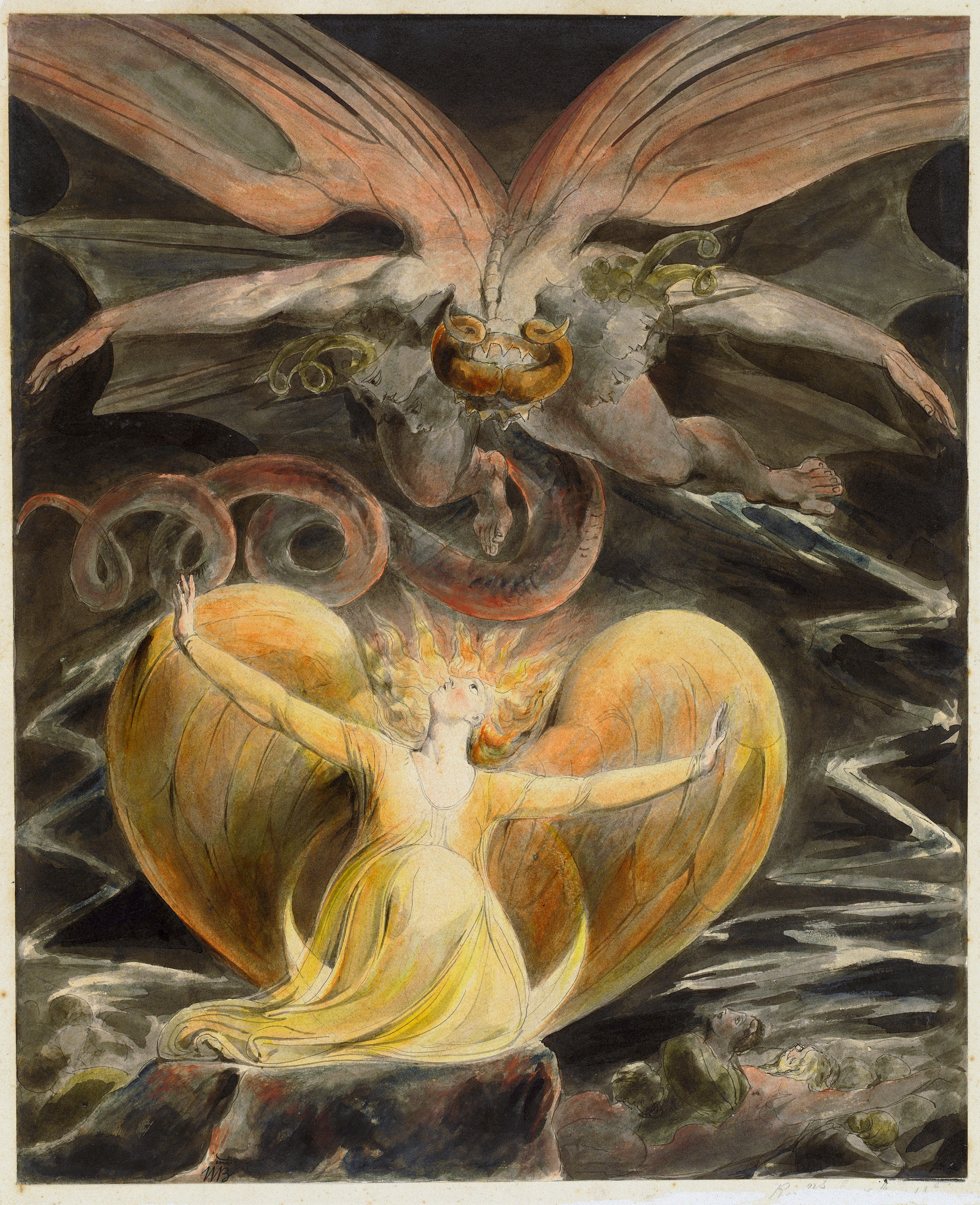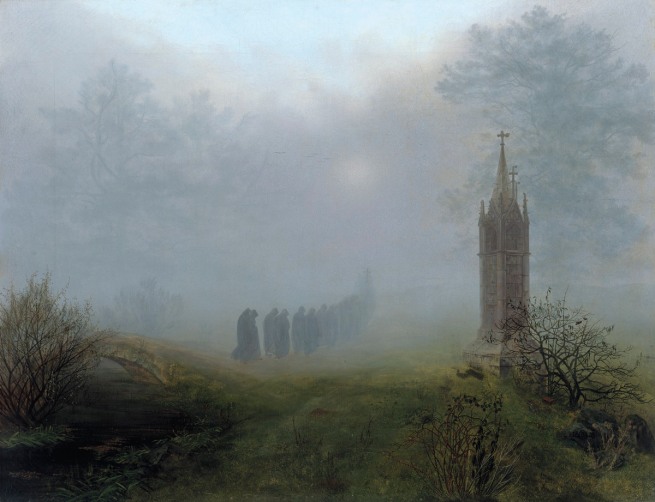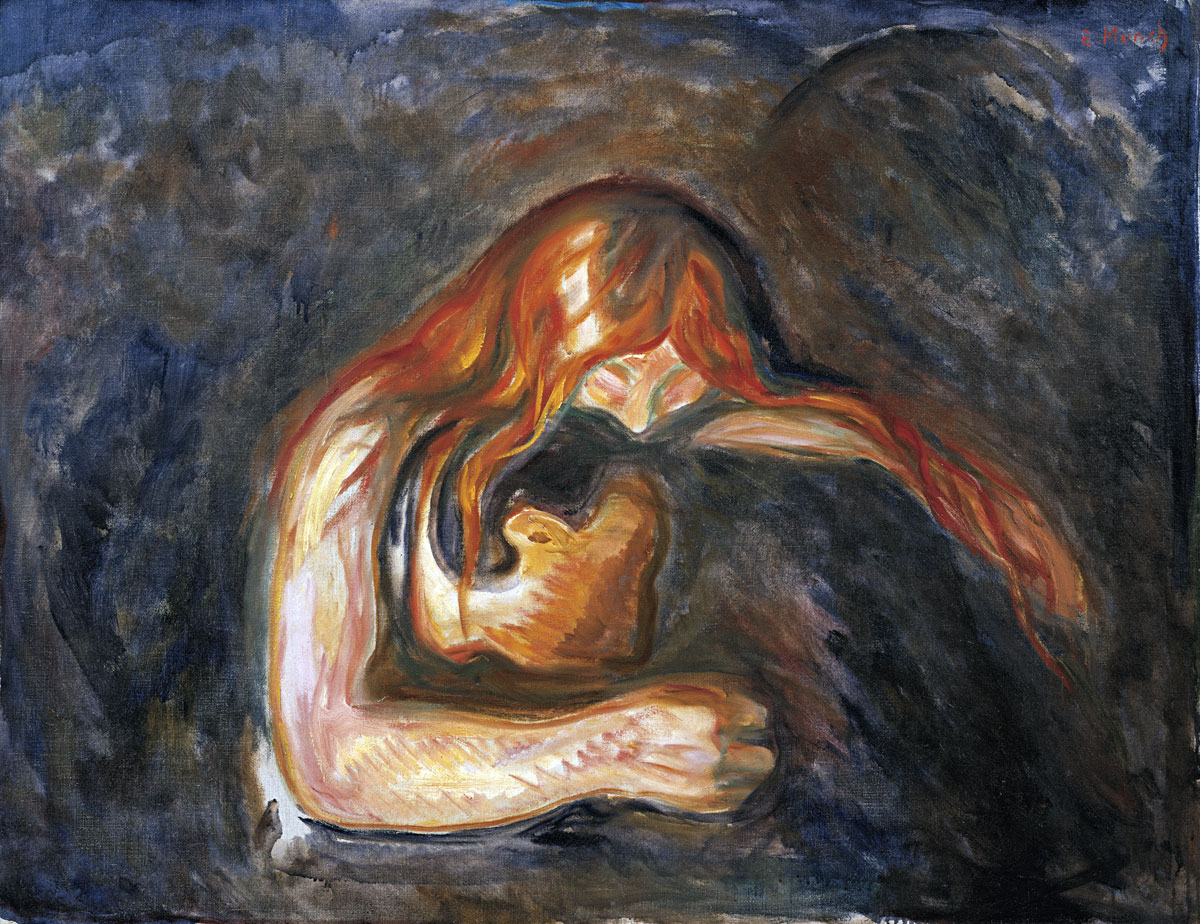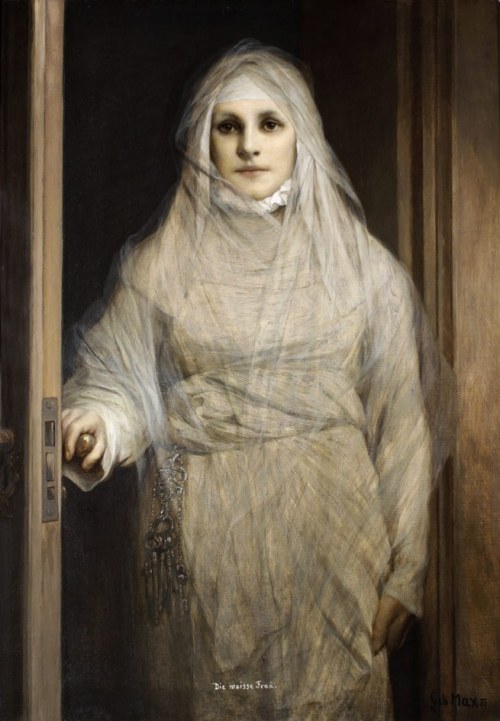The Städel Museum’s major special exhibition “Dark Romanticism. From Goya to Max Ernst“ was on view from September 26th, 2012 until January 20th, 2013. It was the first German exhibition to focus on the dark aspect of Romanticism and its legacy, mainly evident in Symbolism and Surrealism. In the museum’s exhibition house this important exhibition, comprising over 200 paintings, sculptures, graphic works, photographs and films, will present the fascination that many artists felt for the gloomy, the secretive and the evil. Using outstanding works in the museum’s collection on the subject by Francisco de Goya, Eugène Delacroix, Franz von Stuck or Max Ernst as a starting point, the exhibition also presented important loans from internationally renowned collections, such as the Musée d’Orsay, the Musée du Louvre, both in Paris, the Museo del Prado in Madrid and the Art Institute of Chicago.
The works on display by Goya, Johann Heinrich Fuseli and William Blake, Théodore Géricault and Delacroix, as well as Caspar David Friedrich, conveyed a Romantic spirit which by the end of the 18th century had taken hold all over Europe. In the 20th century artists such as Salvador Dalí, René Magritte or Paul Klee and Max Ernst continued to think in this vein. The art works speak of loneliness and melancholy, passion and death, of the fascination with horror and the irrationality of dreams.
After Frankfurt the exhibition, conceived by the Städel Museum, traveled to the Musée d’Orsay in Paris.
The exhibition’s take on the subject was geographically and chronologically comprehensive, thereby shedding light on the links between different centres of Romanticism, and thus retracing complex iconographic developments of the time. It is conceived to stimulate interest in the sombre aspects of Romanticism and to expand understanding of this movement. Many of the artistic developments and positions presented here emerge from a shattered trust in enlightened and progressive thought, which took hold soon after the French Revolution – initially celebrated as the dawn of a new age – at the end of the 18th century. Bloodstained terror and war brought suffering and eventually caused the social order in large parts of Europe to break down. The disillusionment was as great as the original enthusiasm when the dark aspects of the Enlightenment were revealed in all their harshness. Young literary figures and artists turned to the reverse side of Reason. The horrific, the miraculous and the grotesque challenged the supremacy of the beautiful and the immaculate. The appeal of legends and fairy tales and the fascination with the Middle Ages competed with the ideal of Antiquity. The local countryside became increasingly attractive and was a favoured subject for artists. The bright light of day encountered the fog and mysterious darkness of the night.
The exhibition was divided into seven chapters. It began with a group of outstanding works by Johann Heinrich Fuseli. The artist had initially studied to be an evangelical preacher in Switzerland. With his painting

The Nightmare (Frankfurt Goethe-Museum)
he created an icon of dark Romanticism. This work opens the presentation, which extends over two levels of the temporary exhibition space. Fuseli’s contemporaries were deeply disturbed by the presence of the incubus (daemon) and the lecherous horse – elements of popular superstition – enriching a scene set in the present. In addition, the erotic-compulsive and daemonic content, as well as the depressed atmosphere, catered to the needs of the voyeur. The other six works by Fuseli – loans from the Kunsthaus Zürich, the Royal Academy London and the Staatsgalerie Stuttgart – represent the characteristics of his art: the competition between good and evil, suffering and lust, light and darkness. Fuseli’s innovative pictorial language influenced a number of artists – among them William Blake, whose famous water colour The Great Red Dragon from the Brooklyn Museum :

William Blake (1757-1827)
The Great Red Dragon and the Woman Clothed with the Sun
c. 1803-1805
Watercolor, graphite and incised lines
43.7 x 34.8 cm
Brooklyn Museum, Gift of William Augustus White
was on view in Europe for the first time in ten years.
The second room of the exhibition was dedicated to the Spanish artist Francisco de Goya. The Städel displayed six of his works – including masterpieces such as

The Witches’ Flight from the Prado in Madrid


and the representations of cannibals from Besançon.
A large group of works on paper from the Städel’s own collection was also shown. The Spaniard blurs the distinction between the real and the imaginary. Perpetrator and victim repeatedly exchange roles. Good and evil, sense and nonsense – much remains enigmatic. Goya’s cryptic pictorial worlds influenced numerous artists in France and Belgium, including Delacroix, Géricault, Victor Hugo and Antoine Wiertz, whose works were presented in the following room. Atmosphere and passion were more important to these artists than anatomical accuracy.
Among the German artists – who were the focus of the next section of the exhibition – it is Carl Blechen who is especially close to Goya and Delacroix. His paintings are a testimony to his lust for gloom. His soft spot for the controversial author E. T. A. Hoffmann – also known as “Ghost-Hoffmann” in Germany – led Blechen to paint works such as

Pater Medardus (Alte Nationalgalerie, Berlin)
– a portrait of the mad protagonist in The Devil’s Elixirs.
The artist was not alone in Germany when it came to a penchant for dark and disturbing subjects. Caspar David Friedrich’s works, too, contain gruesome elements: cemeteries, open graves, abandoned ruins, ships steered by an invisible hand, lonely gorges and forests are pervasive in his oeuvre. One does not only need to look at the scenes of mourning in the sketchbook at the Kunsthalle Mannheim for the omnipresent theme of death.
Friedrich was prominently represented in the exhibition with his paintings

Moon Behind Clouds above the Seashore from the Hamburger Kunsthalle and

Kügelgen’s Grave from the Lübecker Museums,
as well as with one of his last privately owned works,

Ship at Deep Sea with full Sails.
Friedrich’s paintings are steeped in oppressive silence. This uncompromising attitude anticipates the ideas of Symbolism, which will be considered in the next chapter of the exhibition. These ‘Neo-Romantics’ stylised speechlessness as the ideal mode of human communication, which would lead to fundamental and seminal insights.
Odilon Redon’s masterpiece

Closed Eyes,
a loan from the Musée d’Orsay in Paris, impressively encapsulates this notion.
Paintings by Arnold Böcklin, James Ensor, Fernand Khnopff or Edvard Munch also embody this idea. However, as with the Romantics, these restrained works are face to face with works where anxiety and repressed passions are brought unrestrainedly to the surface; works that are unsettling in their radicalism even today. While Gustave Moreau, Max Klinger, Franz von Stuck and Alfred Kubin belong to the art historical canon, here the exhibition presented artists who are still to be discovered in Germany: Jean-Joseph Carriès, Paul Dardé, Jean Delville, Julien-Adolphe Duvocelle, Léon Frédéric, Eugène Laermans and Lucien Lévy-Dhurmer.
The presentation concluded with the Surrealist movement, founded by André Breton. He inspired artists such as Ernst, Brassaϊ or Dalí, to create their wondrous pictorial realms from the reservoir of the subconscious and celebrated them as fantasy’s victory over the “factual world”.
Max Ernst vehemently called for “the borders between the so-called inner and outer world” to be blurred. He demonstrated this most clearly in his forest paintings, four of which have been assembled for this exhibition, one of them the major work

Vision Provoked by the Nocturnal Aspect of the Porte Saint-Denis (private collection).
The art historian Carl Einstein considered the Surrealists to be the Romantics’ successors and coined the phrase ‘the Romantic generation’. In spite of this historical link the Surrealists were far from retrospective. On the contrary: no other movement was so open to new media; photography and film were seen as equal to traditional media. Alongside literature, film established itself as the main arena for dark Romanticism in the 20th century. This is where evil, the thrill of fear and the lust for horror and gloom found a new home.

The exhibition, which presented the Romantic as a mindset that prevailed throughout Europe and remained influential beyond the 19th century, was accompanied by a substantial catalogue.
As is true for any designation of an epoch, Romanticism too is nothing more than an auxiliary construction, defined less by the exterior characteristics of an artwork than by the inner sentiment of the artist. The term “dark Romanticism” cannot be traced to its origins, but – as is also valid for Romanticism per se – comes from literary studies. The German term is closely linked to the professor of English Studies Mario Praz and his publication La carne, la morte e il diavolo nella letteratura romantica of 1930, which was published in German in 1963 as Liebe, Tod und Teufel. Die schwarze Romantik (literally: Love, Death and Devil. Dark Romanticism).
The exhibition “Dark Romanticism. From Goya to Max Ernst“ traveled to the Musée d’Orsay in Paris (4th March until 9th June 2013).
More images:

Ernst Ferdinand Oehme (1797-1855)
Procession in the Fog
1828
Oil on canvas
81.5 x 105.5 cm
Galerie Neue Meister, Staatliche Kunstsammlungen Dresden

Samuel Colman (1780-1845)
The Edge of Doom
1836-1838
Oil on canvas
137.2 x 199.4 cm
Brooklyn Museum, Bequest of Laura L. Barnes

Salvador Dalí (1904-1989)
Dream caused by the Flight of a Bee around a Pomegranate a Second before Awakening
1944
Oil on wood
51 x 41 cm
Museo Thyssen-Bornemisza, Madrid
© VG Bild-Kunst, Bonn 2012

Edvard Munch (1863-1944)
Vampire
1916-1918
Oil on canvas
85 x 110 cm
Collection Würth
Photo: Archiv Würth
© VG Bild-Kunst, Bonn 2012

René Magritte (1898-1967)
Sentimental Conversation
1945
Oil on canvas
54 x 65 cm
Private Collection
© VG Bild-Kunst, Bonn 2012

Paul Hippolyte Delaroche (1797-1856)
Louise Vernet, the artist’s wife, on her Deathbed
1845-46
Oil on canvas
62 x 74.5 cm
Musée des Beaux-Arts de Nantes
© Musée des Beaux-Arts de Nantes

Gabriel von Max (1840-1915)
The White Woman
1900
Oil on canvas
100 x 72 cm
Private Collection